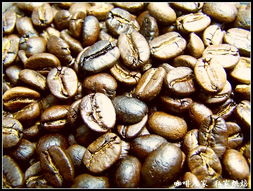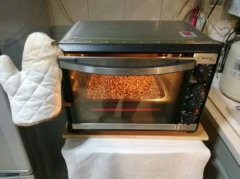Knowledge of Fine Coffee A brief discussion on why coffee beans are roasted
The raw coffee beans for export are not the dark brown beans we often see in cafes with a luster of vegetable oil and a burst of coffee-scented beans. Coffee beans can only be roasted to become coffee beans for grinding and drinking. Of course, this is just a strange modern way, because in the early days, Ethiopians used the fruits of coffee to make wine. Or brew coffee fruit to make drinks. Nowadays, even if someone wants to try this ancient way of drinking coffee, ordinary people can't find fresh coffee fruit in North America and Europe, which consume a lot of coffee. Roasting coffee beans, then grinding and brewing them has become a classic process for people to enjoy coffee.

Baking is the beginning of this process. 80% of the taste of coffee is determined by baking. It can be seen that roasting is very important in coffee production.
Why roast coffee beans? This is because roasting gives off aroma of coffee and makes different kinds of coffee give out different flavors. Without this process, the unique taste of coffee will be greatly reduced. Roasting causes coffee to produce coffee oil, which gives coffee beans a strong aroma. The most outstanding feature of this fragrance is that it is volatile and soluble in water. Therefore, people can not only ask about the mellow smell of coffee beans, but also pour it into the cup and taste it carefully.
Baking, as the name implies, is to provide heat to coffee beans, causing a series of chemical changes inside. First of all, the starch in raw beans will be converted into sugars and acids because of high temperature, while substances such as cellulose will be carbonized differently. Water and carbon dioxide evaporate, while proteins are converted into enzymes, which combine with the rest of the fat to form an oil film on the surface of coffee beans. Coffee beans swell when roasted, a bit like popcorn, and interestingly, coffee crackles during roasting, just like we use microwave popcorn. But because the skin on the surface of coffee beans is very tough, we usually don't see coffee beans crack like popcorn.
We often see that roasted coffee beans have different shades of color, on the one hand, this may be due to different types of individual coffee beans, and on the other hand, the main reason for this color difference is the different degree of roasting. In the most popular language, the degree of baking can be interpreted as the heat of baking. Take the most classic example of carbonated coffee, a French roasted coffee that is highly carbonized, dark brown and carbon black due to its deep roasting (either because of the high temperature during baking, or because of the long baking time, or both, depending on the situation). It is generally believed that carbonized coffee tastes bitter, which comes not only from caffeine but also from carbonized coffee beans.
Important Notice :
前街咖啡 FrontStreet Coffee has moved to new addredd:
FrontStreet Coffee Address: 315,Donghua East Road,GuangZhou
Tel:020 38364473
- Prev

Coffee roasting knowledge teaches you to bake coffee in a household oven
Before baking, pick out the residual beans (insect beans, fermented beans, shell beans, etc.).) Heat the upper and lower tubes of the oven, preheat 150℃, put the raw beans in the selection cage, put them in the oven, change to the upper tube heating, rotate mode, 150℃, bake for 10 minutes, raise the temperature to 230℃, bake for about 25 minutes (depending on the individual's need for baking, you can adjust the time flexibly) to remove the cage.
- Next

Coffee roasting is divided into the following degrees
First, very light baking Light Roast the lightest baking method, the beans are yellowish brown, the aroma and concentration are mild and light, and can be used as a standard for identification in the early stages of baking. Light baking / cinnamon baking Cinnamon Roast as the name suggests, the beans are cinnamon, slightly stronger in aroma and refreshing than very light baking. Medium-baked Medium Roast beans are chestnut, sour and sour
Related
- Beginners will see the "Coffee pull flower" guide!
- What is the difference between ice blog purified milk and ordinary milk coffee?
- Why is the Philippines the largest producer of crops in Liberia?
- For coffee extraction, should the fine powder be retained?
- How does extracted espresso fill pressed powder? How much strength does it take to press the powder?
- How to make jasmine cold extract coffee? Is the jasmine + latte good?
- Will this little toy really make the coffee taste better? How does Lily Drip affect coffee extraction?
- Will the action of slapping the filter cup also affect coffee extraction?
- What's the difference between powder-to-water ratio and powder-to-liquid ratio?
- What is the Ethiopian local species? What does it have to do with Heirloom native species?

